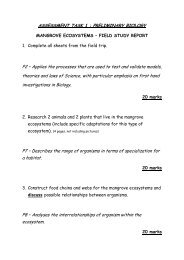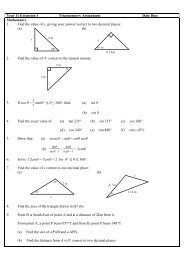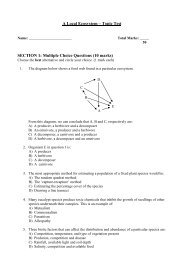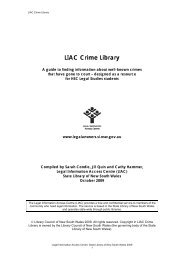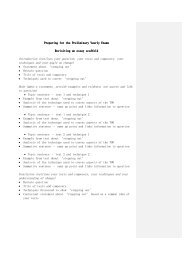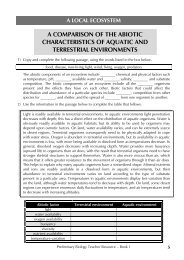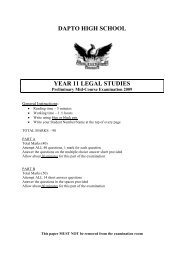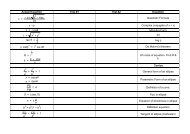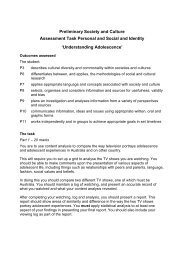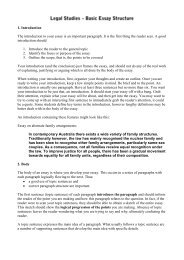DAPTO HIGH SCHOOL – Science Year 7 - Topic: Being a Scientist
DAPTO HIGH SCHOOL – Science Year 7 - Topic: Being a Scientist
DAPTO HIGH SCHOOL – Science Year 7 - Topic: Being a Scientist
- No tags were found...
Create successful ePaper yourself
Turn your PDF publications into a flip-book with our unique Google optimized e-Paper software.
<strong>DAPTO</strong> <strong>HIGH</strong> <strong>SCHOOL</strong> <strong>–</strong> <strong>Science</strong><strong>Year</strong> 7 - <strong>Topic</strong>: Up Mullet CreekTo satisfactorily complete this topic you must achieve the outcomes below.Student Outcomes1. Explain the difference between producers, and consumers and give examples from the localenvironment. E.g Producers make their own food from nutrients in the soil, water and carbon dioxide(plants), whilst consumers must eat other loving things to get the carbon compounds they need(animals).2. Tabulate information that describes and gives examples of differences between carnivores,omnivores, herbivores and decomposers.3. Define a food chain as a flow of energy through a number of different organisms.4. Draw simple food chains including plants and animals including at least one example from MulletCreek.5. Construct and draw food webs, identifying producers, herbivores, carnivores, omnivores anddecomposers from Australian ecosystems.6. Define the terms adaptations, ecosystem and environment.7. Collate information from a variety of sources, including only relevant information, research someadaptations of living things to factors in their environments.8. Research using the internet some effects of bushfires, drought and flood on Australian ecosystems,including the Aboriginal perspective on land management.9. Recall the general word equations for photosynthesis and respiration.10. Describe the roles of photosynthesis and respiration in ecosystems.11. Recognise that all materials come from the Earth and returns to the Earth.12. Draw, label and describe the water cycle.13. Name and label the zones of the Earth (atmosphere, lithosphere, hydrosphere and biosphere).14. Select and use an appropriate graph to present information on the main gases of the atmosphere andthe approximate percentages of each.15. Describe the importance of atmospheric gases including ozone and greenhouse gases to life onEarth.Achieved?(√ or X)Vocabulary ListProducer Consumer Nutrients OrganismHerbivore Decomposer Food chain AdaptionFood web Ecosystem Environment RespirationDrought Flood Photosynthesis HydrosphereAboriginal Atmosphere Lithosphere OmnivoreOzone Greenhouse Carnivore EnergyBiosphere<strong>Topic</strong> Test: ___/50Bookwork : Satisfactory UnsatisfactoryAttitude : Satisfactory UnsatisfactoryAssessments : Satisfactory Unsatisfactory________________________Teacher Signature________________________Parent/Guardian Signature




